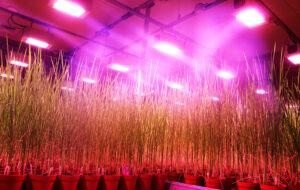by Ajay Kumar Mishra, Pidikiti Pavithra, Manas Ranjan Sahoo, Sheetal Sharma
Ecological engineering is a novel approach to pest management that considers cultural practices rooted in environmental knowledge and nature-based solutions. This paradigm shift is gaining attention in pest management due to its potential for sustainability and effectiveness without compromising the health of the environment.

Insect pests cause significant yield loss of around 20 to 30% in the field and in during postharvest. However, using chemical pesticides has resulted in environmental pollution, ecological imbalance, pest resurgence, insecticide resistance, and pesticide residues in food and the environment. To ensure food security, higher yield, and safer food it is crucial to find alternative pest management methods that are more sustainable, efficient, and environment-friendly.
Ecological engineering is a novel approach to pest management that considers cultural practices rooted in environmental knowledge and nature-based solutions. This paradigm shift is gaining attention in pest management due to its potential for sustainability and effectiveness without compromising the health of the environment.
The concept of ecological engineering
Ecological engineering is defined as the “design of sustainable ecosystems that integrate human society with its natural environment for the benefit of both”. In 2013, the International Rice Research Institute (IRRI) launched an ecological engineering project for rice. The goal of the project was to reduce the environmental impact of rice farming and promote sustainable rice production through a management strategy to strengthen its natural capacity to cope with pests.
Ecological engineering principles include enhancing biodiversity, promoting ecological processes, maintaining ecosystem stability, and reducing synthetic inputs. These principles aim to create a balanced ecosystem that can resist pest infestation by promoting natural enemies, reducing the availability of pest food sources, and enhancing plant resistance.
This can be achieved through companion planting, intercropping, and crop rotation. Companion planting involves planting two or more plant species together with a mutually beneficial relationship, such as providing each other with nutrients or repelling pests.
Intercropping involves planting two or more crops together in the same field to create a diverse ecosystem that can support a variety of natural enemies. Crop rotation involves alternating the crops grown in a field to disrupt pest populations and provide a diverse habitat for natural enemies.
Another approach in ecological engineering for pest management is habitat alteration to increase the population and diversity of natural enemies of pests and help control their populations. Habitat management strategies include hedgerows and cover crops that provide shelter, food, and breeding sites for natural enemies. Farmers may also establish insectary strips of early flowering plants and herbs that do not require much care.
Bund cropping is another ecological engineering approach for pest management. It involves planting certain plant species along the borders of the field or in between the rows of crops to create barriers that can repel pests and attract their natural enemies.
The ecological engineering field tests at IRRI used fruits and vegetable crops to attract beneficial insect predators and parasitoids in rice paddies to reduce pest populations. The results showed that ecologically engineered rice fields sustained lower damage from planthoppers and leaf folders compared to the farmers’ practice of using insecticides.

Ecological engineering research at ISARC
At the IRRI South Asia Regional Centre (ISARC) in Varanasi, we observed significant pest population control through ecological engineering practices in organic and natural farming trails.
Habitat alteration by growing trap and bund crops like sunflower, marigold, and lemongrass helped to maintain prey and predator balance. Pheromone traps, yellow sticky traps, and light traps enabled us to monitor the pest population and dynamics. Trap crops like lemongrass, marigold, and okra planted on rice bunds attracted rice-striped stem borer females to lay eggs and helped protect the main crop.
Despite its potential benefits, ecological engineering for pest management faces several challenges, including building knowledge and awareness, long-term planning and monitoring, and dependence on external inputs. The effectiveness of ecological engineering may also vary depending on several factors. To successfully implement ecological engineering practices on a large scale, there is a need to understand farmers’ perspectives to help design appropriate messaging and communications that can reach and motivate farmers.
IRRI plans to organize awareness and capacity-building sessions to educate farmers on the benefits and importance of ecological engineering in the coming days.
Related stories:
Restoration of rice ecosystem services: Ecological engineering for pest management incentives and practices in the Mekong Delta Region of Vietnam
In southern Vietnam, government support has facilitated the adoption of ecological engineering for pest management by thousands of rice farmers. Despite this, there is still little information on the evolving knowledge, attitudes, and practices of rice farmers regarding ecological engineering and little understanding of the potential social sustainability of ecological engineering in Vietnam
Reducing pesticides and increasing crop diversification offer ecological and economic benefits for farmers—a case study in Cambodian rice fields
To increase incentives for farmers, the selection of surrounding plants should integrate information about farmers’ choices to increase potential adoption by farmers. The proper implementation of ecological engineering in combination with farmers’ choice of crops is a promising solution for sustainable rice production.
Striking a balance through ecologically engineered rice ecosystems
The high-diversity vegetation patches were designed for farmers as part of the “tool kit” of ecological engineering—a rapidly growing discipline that attempts to create managed ecosystems with benefits for both people and nature.






